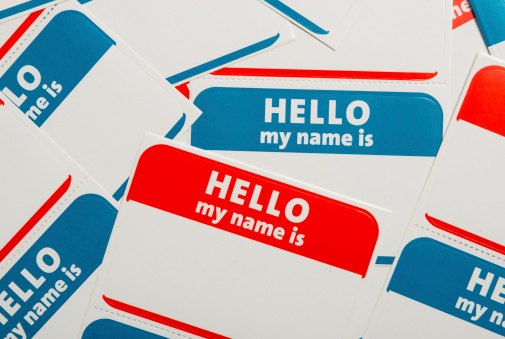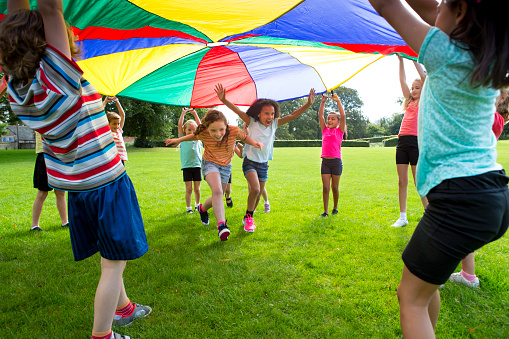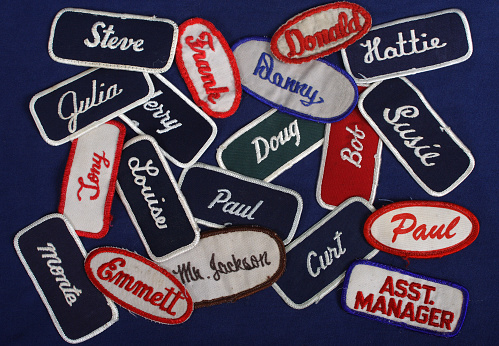Top tips for remembering students’ names

Our name is probably the most important word to us and is what identifies us as individuals. When we meet someone of authority or someone we respect or admire and they are able to remember our name, we sometimes feel a jolt of excitement or a feeling of joy. It is almost synonymous to being recognized and acknowledged as a human being whose opinions and thoughts do matter.
Having a name that is difficult to pronounce and remember, I’m often faced with my name being mispronounced, misspelt, miswritten and forgotten. It’s annoying, no matter how many times it happens. And when someone does get it right, I feel almost grateful.
As teachers, we are faced with the task of remembering multiple new names every term (and for some, every month). And if your students do not share your nationality, the names you have on your register would probably be foreign to you, and therefore potentially harder to commit to memory. And as a person in a position of authority, your ability to remember their names will matter to the students and will help with bonding.
I’ve also found that when I make an effort to remember and use the names of the students in a class, they tend to remember each other’s names better too. And this often leads to better classroom dynamics: the students get along better, they work better in teams, they are more willing to share personal information and experience, and they even see each other outside class more.

So how can we remember the names of all our students when we meet ten, twenty and sometimes even forty students at a go? Here are some tips that can help even those who claim they are ‘bad at remembering names’.
1. Ask for an introduction
Don't just read out the names on a class register. Get students to introduce themselves when meeting them for the first time. Model the introduction by doing one yourself. Have them say their name and something interesting about themselves. If you have a multi-national class, you might want students to include where they are from in their introductions.
2. Listen actively
Pay attention when someone introduces themselves. We are sometimes so excited by all the new stimuli of a new class or a first meeting that we are not really listening when a student introduces themselves. In our heads, we are already thinking about what we want to say next. Put our egos aside for a moment and really listen.
3. Repeat it exaggeratedly in your head
When you hear someone say their name, actively repeat that name in your head several times while associating the person in front of you with it. Focus on a recognizable feature of that person (e.g. their sharp nose, their sparkling white teeth, their curly red hair.) and try repeating their name in exaggerated, dramatic and funny ways (in your own head and not necessarily to the person in question).
‘Kyeong Hee. KYEONG HEE. KiiiiiiYooooong Heeeeee, Kyeong Kyeong Kyeong Hee Hee Hee, Kikikikyeong!’
I once introduced myself to a young American girl who immediately sang my name back to me. My name ‘Chia’ apparently reminded her of a famous American advert for a product called the Chia pet, a plant that grows into the shape of an animal. And so she merrily went, ‘Ch ch ch chia!’ and as you can imagine, she never forgot my name!
4. Engage with the name
Say the name back to them e.g. ‘Nice to meet you, Kyeong Hee,’ or ‘That’s a beautiful name, Kyeong Hee’. Engaging with the name will help you remember it.
If it is a foreign name and one you have not heard of, take time with it and ask questions like ‘How do you pronounce it again?’, ‘Am I saying it right?’ and ‘How do you spell Kyeong Hee?’ Your sincere attempts to get their name right will not go unnoticed.

5. Use mnemonics and associations to remember the name
During your first meeting with the students, avoid filling the silence with lots of teacher talking time. Give students tasks, have them working in pairs, getting to know each other, and get them talking. In the meantime, consider some creative ways that will help you remember their names. Look at each student in turn and consciously make the association (see below). Notice in each example that attaching images to the association can vastly strengthen the association, and aid memory and retrieval.
- Associate them to someone you know with a similar name.
Have you heard this name before? Do you know a celebrity with that name? In your head, see the face of the person/celebrity you know right next to the face of this new person. See them dancing together, see them swapping faces, see them morphing into each other. The funnier the image, the more memorable this will be.
- Associate the name with similar words or words that rhyme.
I remember being quite impressed by one of the few British colleagues who would call me by my full first name ‘Chia Suan’ right from the day he met me, and it transpired one day that he had been saying to himself, ‘There’s just one. Just One Chia Suan!’
Simple mnemonics like this can really work well with foreign sounding names. And adding a visual image (preferably a funny one) could really enhance that association. E.g. meeting Marek for the first time, I tried to associate his name with words ‘My Rake’. I then looked at Marek and visualized him holding on to a rake possessively, fending off anyone who tried to take the rake off him, shouting ‘My rake! My rake!’
If you are struggling to come up with a simple mnemonic, try a rhyme that works for you. As with funny images, funny rhymes are more likely to stick. ‘Come along Kyeong, Sing a song Kyeong, On a tree Kyeong Hee, Sipping tea Kyeong Hee.’ See the vivid image of Kyeong sipping tea and singing a song on a tree and solidify that rhyme-image association in your mind by repeating it several times.
- Tell yourself a story using the name
e.g. She banged her key on her gong and it made the strange sound ‘hee hee’.
Again, ensure you visualize the funny image of Kyeong Hee banging a key on a gong and it making the sound ‘hee hee’. If the visualization makes you laugh, you know you’ve succeeded in creating a memorable association.
6. Use their name whenever possible
Find opportunities to use their name. e.g. ‘That’s was really good, Kyeong Hee’, ‘Kyeong Hee, do you think you could partner up with Antonio?’ and ‘Did you hear Kyeong Hee’s answer to that question? Kyeong Hee, could you repeat it again for the class?’ The more you use it, the more likely you are to remember it.
7. Learn it kinesthetically
Write their name down. You might be issued with a register with the students’ names. Consider carrying a piece of scrap paper with the register for the first few days, and write their names down on the scrap paper. The very act of writing a name out will help you remember it. You could use that piece of paper to also jot down any relevant information about that particular student e.g. the city they are from, their interests, likes/dislikes, hopes/dreams etc.

8. Play name games
There are several name games that you can play with your students to help you and the students to remember each other’s names. Here are some:
- Have students arrange themselves in alphabetical order of their names. When they have done so, have them say their names as you go down the row. Repeat each name as you hear them.
- Play ‘Wacko’ by getting students to stand in a circle. One student is tagged and stands in the middle of the circle and is given a rolled up newspaper (make sure it’s flimsy). You can start by shouting the name of another student out. The tagged student gets to hit them with the newspaper unless they can shout out the name of another student out before getting hit. If a student is hit, they are tagged and swaps places with the student in the middle of the circle.
- Play ‘Pass the ball’ with students standing in a circle. The one with the ball has to say the name of the person they are passing to before passing/throwing the ball. A variation on this is to say the name and an interesting fact about the person they are passing to.
Now you’ve learnt their names, what could endear you to your students even more? Try remembering the names of people close to them e.g. their best friend, their spouse, their siblings, their parents. When appropriate, use these names in conversation with your students e.g. ‘How’s your brother Guillaume? Did he win the singing competition?’ or ‘When’s your best friend Yising coming to visit you in England?’ and watch their faces light up.



Comments
Write a Comment
Comment Submitted